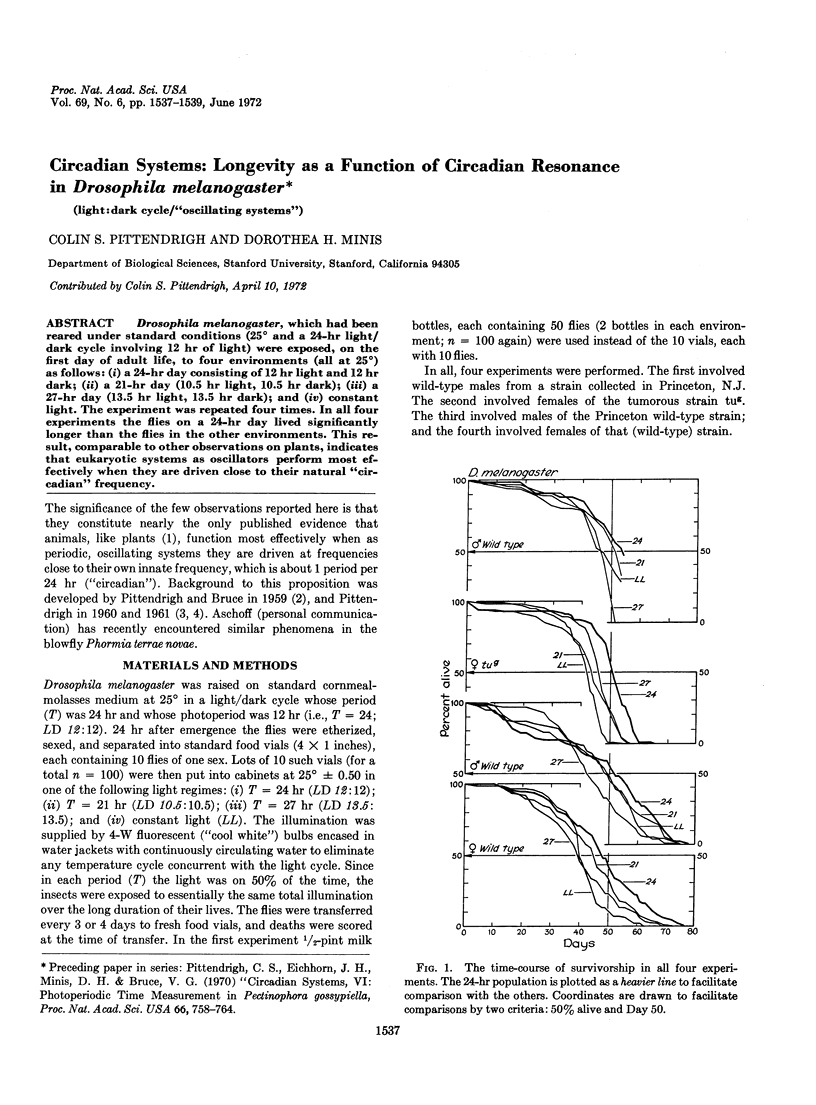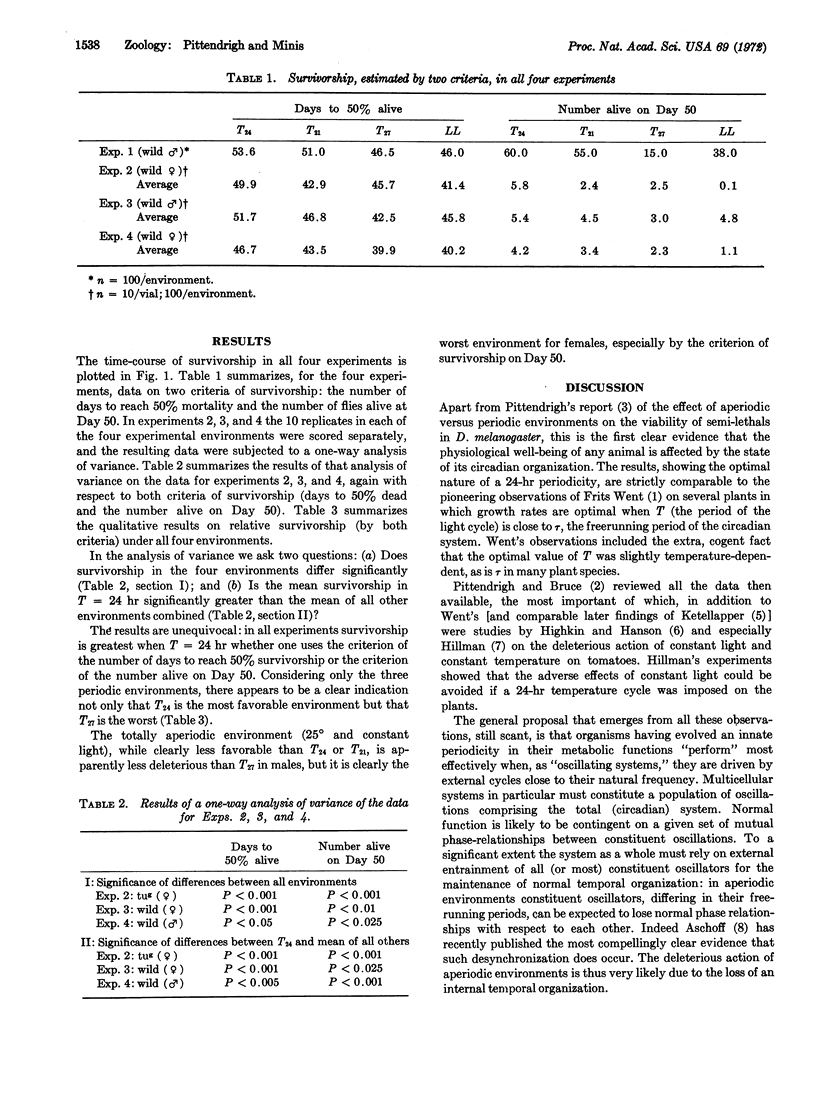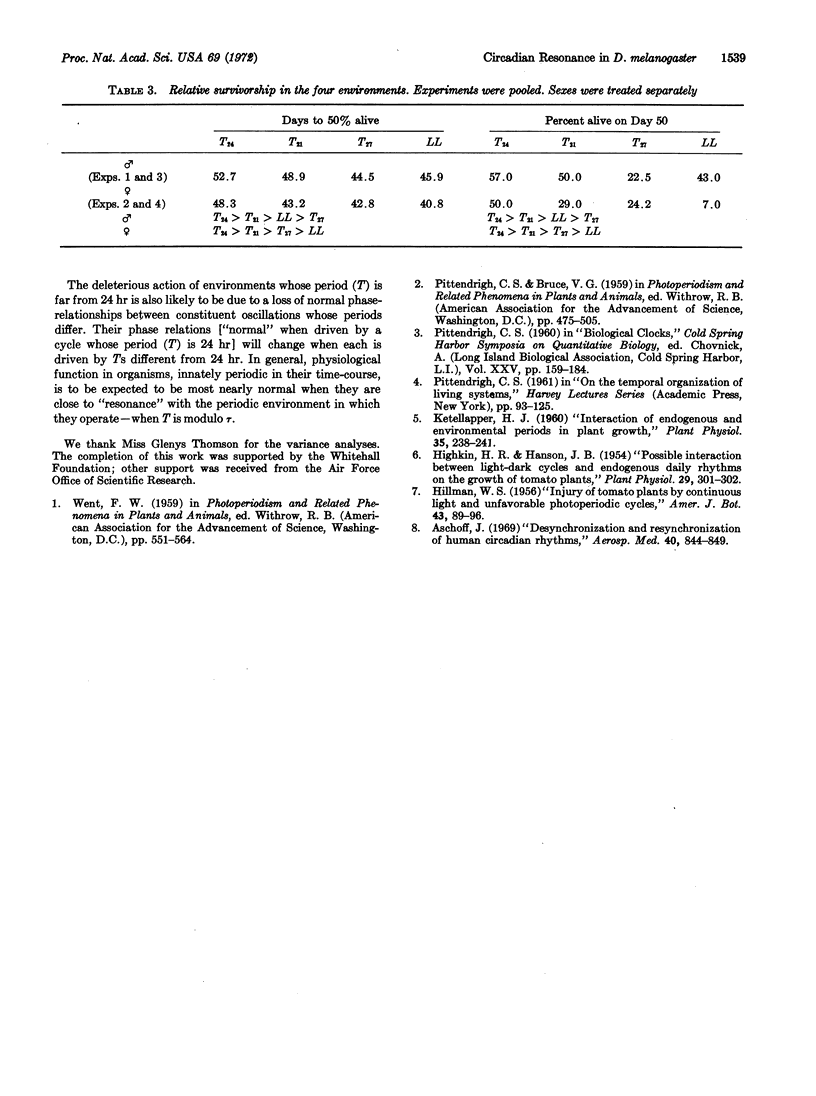Abstract
Drosophila melanogaster, which had been reared under standard conditions (25° and a 24-hr light/dark cycle involving 12 hr of light) were exposed, on the first day of adult life, to four environments (all at 25°) as follows: (i) a 24-hr day consisting of 12 hr light and 12 hr dark; (ii) a 21-hr day (10.5 hr light, 10.5 hr dark); (iii) a 27-hr day (13.5 hr light, 13.5 hr dark); and (iv) constant light. The experiment was repeated four times. In all four experiments the flies on a 24-hr day lived significantly longer than the flies in the other environments. This result, comparable to other observations on plants, indicates that eukaryotic systems as oscillators perform most effectively when they are driven close to their natural “circadian” frequency.
Keywords: light:dark cycle, “oscillating systems”
Full text
PDF


Selected References
These references are in PubMed. This may not be the complete list of references from this article.
- Aschoff J. Desynchronization and resynchronization of human circadian rhythms. Aerosp Med. 1969 Aug;40(8):844–849. [PubMed] [Google Scholar]
- Highkin H. R., Hanson J. B. Possible Interaction between Light-dark Cycles and Endogenous Daily Rhythms on the Growth of Tomato Plants. Plant Physiol. 1954 May;29(3):301–302. doi: 10.1104/pp.29.3.301. [DOI] [PMC free article] [PubMed] [Google Scholar]
- Ketellapper H. J. Interaction of Endogenous and Environmental Periods in Plant Growth. Plant Physiol. 1960 Mar;35(2):238–241. doi: 10.1104/pp.35.2.238. [DOI] [PMC free article] [PubMed] [Google Scholar]


